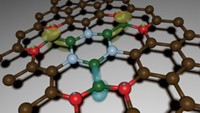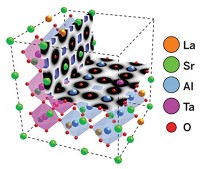Advertisement
Grab your lab coat. Let's get started
Welcome!
Welcome!
Create an account below to get 6 C&EN articles per month, receive newsletters and more - all free.
It seems this is your first time logging in online. Please enter the following information to continue.
As an ACS member you automatically get access to this site. All we need is few more details to create your reading experience.
Not you? Sign in with a different account.
Not you? Sign in with a different account.
ERROR 1
ERROR 1
ERROR 2
ERROR 2
ERROR 2
ERROR 2
ERROR 2
Password and Confirm password must match.
If you have an ACS member number, please enter it here so we can link this account to your membership. (optional)
ERROR 2
ACS values your privacy. By submitting your information, you are gaining access to C&EN and subscribing to our weekly newsletter. We use the information you provide to make your reading experience better, and we will never sell your data to third party members.
Materials
Surface texture on polymers
April 16, 2007
| A version of this story appeared in
Volume 85, Issue 16
April 2, page 62: Spinhenge@home, a volunteer computer project to calculate spin dynamics of magnetic molecules, was spelled incorrectly.
"WRINKLED SKINS" gives the impression that formation of surface texture on polymers via ion bombardment has just been discovered (C&EN, Jan. 22, page 8). This phenomenon was studied extensively at NASA's Lewis Research Center in the Terrestrial Applications of Ion Thruster Technology program under the direction of Bruce Banks in the early 1980s.
In the materials department at Virginia Tech, I had a small contract with NASA to characterize both the targets and sputter deposits of many polymers using scanning electron microscopy and X-ray photoelectron spectroscopy, briefly reported in Polymeric Materials: Science & Engineering Preprints (1984, 50, 459). In general, the topography that developed on the targets depended on the distribution of sputter-resistant regions (for example, spherulites, variable cross-link density); preexisting topography (for example, molding marks); and the increase in sputter rate as the angle of ion impact deviated from perpendicular. Thus the centers of spherulites became the apex of cones, and fine scratches on polished molding plates produced wrinkles or channels. The surface composition of both targets and sputter-deposits was always depleted of electronegative elements, presumably due to formation of volatile species.
David W. Dwight
State College, Pa.





Join the conversation
Contact the reporter
Submit a Letter to the Editor for publication
Engage with us on Twitter